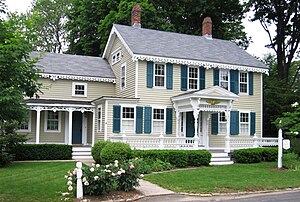 The number of financially distressed California homeowners who were dragged into the formal foreclosure process declined again last quarter, the result of turmoil and policy changes within the mortgage industry as well as shifts in the economy, a real estate information service reported.
The number of financially distressed California homeowners who were dragged into the formal foreclosure process declined again last quarter, the result of turmoil and policy changes within the mortgage industry as well as shifts in the economy, a real estate information service reported.Last quarter's activity was the lowest since 53,493 NoDs were recorded in the second quarter of 2007. It was just over half the record 135,431 default notices recorded in the first quarter of 2009.
"Lenders and servicers have put various temporary holds on foreclosure filings while they work on procedural issues and respond to regulatory and legal challenges. It's unclear how much of last quarter's decline can be attributed to market factors and strategic decisions, and how much can be attributed to the formalities of the foreclosure process," said John Walsh, DataQuick president.
Most of the loans going into default are from the 2005-2007 period: the median origination quarter for defaulted loans is still third-quarter 2006. That has been the case for two years, indicating that weak underwriting standards peaked then. Most of the loans made in 2006 are owned and/or serviced by institutions other than those that made the loans.
The most active "beneficiaries" in the formal foreclosure process last quarter were JPMorgan Chase (JPM_)(9,634), Wells Fargo(WFC_) (8,329) and Bank of America (BAC_) (7,158).
The "servicers" (or the Trustees in the formal foreclosure process) that pursued the highest number of defaults last quarter were ReconTrust Co (mostly for Bank of America and MERS), Quality Loan Service Corp (Bank of America), California Reconveyance Co (JPMorgan Chase), NDEx West (Wells Fargo) and Cal-Western Reconveyance Corp (Wells Fargo).
California's priciest zip codes collectively saw mortgage defaults buck the market-wide trend again and rise slightly quarter-to-quarter, while their defaults fell less on a year-over-year basis than in the overall market. The state's 80 zip codes with median sale prices of $800,000 or more last quarter posted a 5.8% quarter-to-quarter increase in default notices and a 4.7% year-over-year decline.











